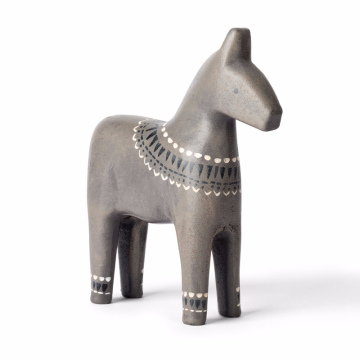Introduction to Spain's Mountain Regions
Spain is renowned for its diverse topography, which includes majestic mountain landscapes that significantly shape the cultural and ecological fabric of the country. The mountainous terrains can be categorized into several prominent ranges, each exhibiting unique geographical features and climatic variations. Among these, the Pyrenees stands out as a natural border between Spain and France, boasting lofty peaks and rich biodiversity. Known for its striking vistas, this range is not only a paradise for outdoor enthusiasts but also a cornerstone of regional culture, often reflected in the traditional lifestyles and festivals of the surrounding communities.
To the south, the Sierra Nevada rises dramatically, home to the highest peak on the Iberian Peninsula, Mulhacén. This mountain range is characterized by a Mediterranean climate, with stark differences in temperature and precipitation across its altitudes. The Sierra Nevada’s snow-capped peaks provide year-round opportunities for skiing in winter and hiking in summer, making it a popular destination for both locals and visitors. This region also holds great cultural significance, interwoven with the history of Al-Andalus and the Moorish influence evident in its architecture and customs.
Further north lies the Picos de Europa, a lesser-known treasure that offers breathtaking landscapes and geological formations, such as dramatic cliffs and deep canyons. This mountain range is distinguished by its limestone peaks and rich ecosystems, home to a variety of flora and fauna. The Picos de Europa holds a firm place in Spanish history and mythology, often depicted in literature and art. Collectively, these mountain regions contribute to the geographical and cultural tapestry of Spain, serving as both a sanctuary for nature lovers and a reservoir of historical narratives waiting to be explored.
Unveiling Hidden Gems: Off-the-Beaten-Path Destinations
Spain, known for its vibrant culture and rich heritage, also boasts mesmerizing mountain landscapes that are often overlooked by travelers. Within these ranges lie hidden gems that offer unparalleled natural beauty and unique experiences for those willing to venture off the beaten path. One such location is the Valle de Ordesa, nestled in the Pyrenees. This stunning valley features dramatic rock formations and diverse wildlife, making it a haven for hikers and nature enthusiasts. The Ordesa National Park is replete with trails that wind through ancient forests and alongside rushing rivers, providing numerous opportunities for outdoor activities.
Another gem worth exploring is Lake Fuente de, situated in the Picos de Europa range. This tranquil lake, surrounded by rugged peaks and lush meadows, is ideal for a peaceful retreat. The area is abundant in endemic flora and fauna, making it a popular spot for birdwatching and photography. Visitors can also enjoy fishing or simply relax in the serene environment, taking in the breathtaking views that define this secluded mountain landscape.
The charming village of Gorafe, located in the Sierra de Baza, showcases the rustic allure of Spain’s mountainous regions. This quaint settlement is known for its striking geological formations and rich history, offering visitors a glimpse into traditional Andalusian culture. Outdoor activities in Gorafe include walking tours that lead through archaeological sites and breathtaking viewpoints, allowing travelers to engage with both the natural and historical aspects of the region.
In conclusion, Spain's lesser-known mountain destinations provide an opportunity to experience the country's natural beauty and rich biodiversity away from the crowds. Whether it's the majestic canyons of the Valle de Ordesa, the serene Lake Fuente de, or the enchanting village of Gorafe, these hidden gems cater to adventurers and nature lovers alike, ensuring that every visit is memorable.
Cultural Experiences and Traditions in Mountain Communities
The mountainous regions of Spain are not only breathtaking in their natural beauty but also rich in cultural heritage. The local communities in these areas possess a tapestry of traditions steeped in history and influenced by their unique geographical landscapes. Each mountain village offers a glimpse into the traditional practices that have been lovingly preserved over the centuries, often in harmony with the surrounding environment. Festivals play a central role in the cultural calendar, showcasing the vibrant identity of these communities.
Various festivities are held throughout the year, celebrating everything from agricultural cycles to religious events. For instance, the famous 'Fiesta de las Fallas' in Valencia has roots that stretch to the traditions of artisans in mountainous regions, where the celebration of light and fire reflects the gradual change of seasons. These festivals not only foster a sense of community but also engage visitors, providing them with an immersive experience into local customs. Traditional music and dance often accompany these festivities, allowing participants to connect with a deep sense of place and cultural continuity.
Gastronomy in Spain's mountain regions is another essential aspect of cultural identity. The unique terroir influences local culinary practices, leading to the creation of dishes that highlight the region’s natural resources. From hearty stews to artisanal cheeses, the food tells a story of survival and cooperation, influenced by both ancient traditions and local ingredients. Moreover, artisanal crafts such as pottery and textiles showcase the skill of local artisans, who draw inspiration from their environment and cultural heritage. As modernization threatens these age-old customs and traditions, it becomes increasingly important to recognize and preserve these unique cultural identities, ensuring they remain a defining part of Spain's mountainous charm.
Sustainable Travel and Conservation Efforts
Spain's mountainous regions, renowned for their breathtaking landscapes and biodiversity, face various environmental challenges that necessitate responsible tourism practices. Sustainable travel not only allows visitors to enjoy the beauty of these hidden gems but also plays a crucial role in protecting them for future generations. Efforts aimed at promoting responsible tourism are gaining traction, with local communities actively involved in conservation initiatives that emphasize environmental stewardship.
Many of Spain's popular mountain destinations are implementing measures that ensure the preservation of their unique ecosystems. Local conservation groups, often in collaboration with government agencies, develop programs aimed at protecting wildlife habitats, reforestation, and maintaining trails. Additionally, these organizations promote sustainable agricultural practices among local farmers, which helps to maintain the traditional landscape while minimizing environmental impact. Tourists visiting these areas can contribute to these initiatives by choosing eco-friendly accommodations and supporting local businesses that prioritize sustainability.
Engaging in eco-friendly activities enhances visitors' experiences while ensuring that they contribute positively to the environment. Hiking, rock climbing, and birdwatching are popular activities in Spain's mountain ranges, and they can be enjoyed responsibly. Choosing marked trails, reducing waste, and staying on designated paths helps maintain natural integrity. Furthermore, travelers are encouraged to participate in local clean-up events or conservation workshops whenever possible. These opportunities foster a deeper connection with the landscape and provide insights into the importance of conservation efforts.
Being a responsible visitor also entails respecting local customs and engaging with the community. This can involve learning about cultural heritage sites, trying traditional foods, and shopping at local markets. By promoting sustainable practices through thoughtful choices, visitors play an integral role in safeguarding Spain's mountain landscapes, ensuring that these hidden gems remain intact for generations to come.








